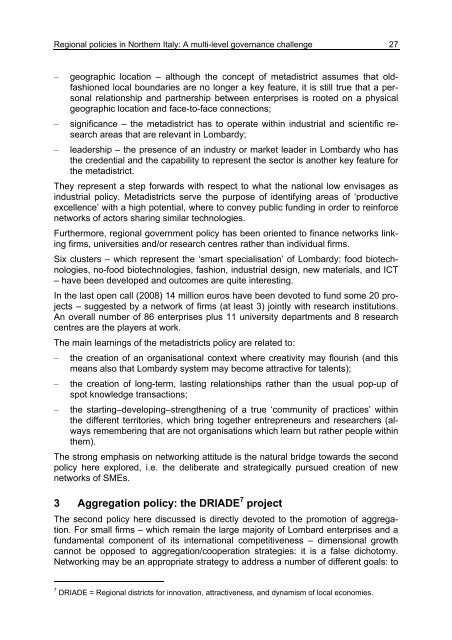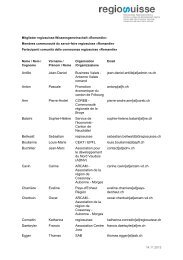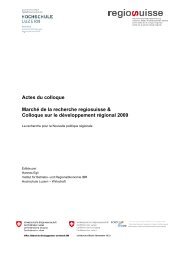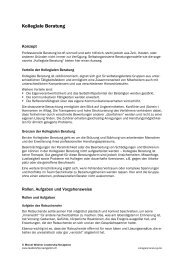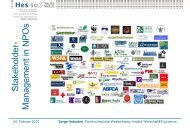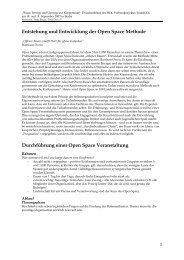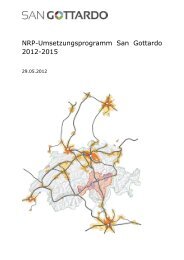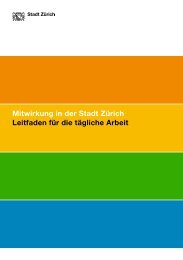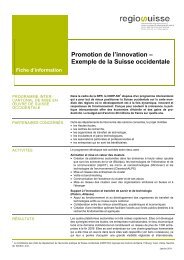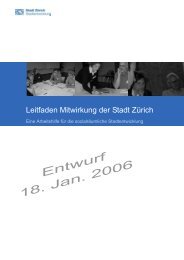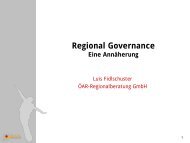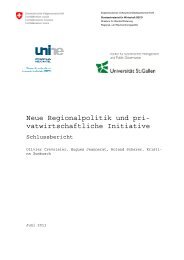Actes du colloque Marché de la recherche regiosuisse & Colloque ...
Actes du colloque Marché de la recherche regiosuisse & Colloque ...
Actes du colloque Marché de la recherche regiosuisse & Colloque ...
Erfolgreiche ePaper selbst erstellen
Machen Sie aus Ihren PDF Publikationen ein blätterbares Flipbook mit unserer einzigartigen Google optimierten e-Paper Software.
Regional policies in Northern Italy: A multi-level governance challenge 27– geographic location – although the concept of metadistrict assumes that oldfashionedlocal boundaries are no longer a key feature, it is still true that a personalre<strong>la</strong>tionship and partnership between enterprises is rooted on a physicalgeographic location and face-to-face connections;– significance – the metadistrict has to operate within in<strong>du</strong>strial and scientific researchareas that are relevant in Lombardy;– lea<strong>de</strong>rship – the presence of an in<strong>du</strong>stry or market lea<strong>de</strong>r in Lombardy who hasthe cre<strong>de</strong>ntial and the capability to represent the sector is another key feature forthe metadistrict.They represent a step forwards with respect to what the national low envisages asin<strong>du</strong>strial policy. Metadistricts serve the purpose of i<strong>de</strong>ntifying areas of ‘pro<strong>du</strong>ctiveexcellence’ with a high potential, where to convey public funding in or<strong>de</strong>r to reinforcenetworks of actors sharing simi<strong>la</strong>r technologies.Furthermore, regional government policy has been oriented to finance networks linkingfirms, universities and/or research centres rather than indivi<strong>du</strong>al firms.Six clusters – which represent the ‘smart specialisation’ of Lombardy: food biotechnologies,no-food biotechnologies, fashion, in<strong>du</strong>strial <strong>de</strong>sign, new materials, and ICT– have been <strong>de</strong>veloped and outcomes are quite interesting.In the <strong>la</strong>st open call (2008) 14 million euros have been <strong>de</strong>voted to fund some 20 projects– suggested by a network of firms (at least 3) jointly with research institutions.An overall number of 86 enterprises plus 11 university <strong>de</strong>partments and 8 researchcentres are the p<strong>la</strong>yers at work.The main learnings of the metadistricts policy are re<strong>la</strong>ted to:– the creation of an organisational context where creativity may flourish (and thismeans also that Lombardy system may become attractive for talents);– the creation of long-term, <strong>la</strong>sting re<strong>la</strong>tionships rather than the usual pop-up ofspot knowledge transactions;– the starting–<strong>de</strong>veloping–strengthening of a true ‘community of practices’ withinthe different territories, which bring together entrepreneurs and researchers (alwaysremembering that are not organisations which learn but rather people withinthem).The strong emphasis on networking attitu<strong>de</strong> is the natural bridge towards the secondpolicy here explored, i.e. the <strong>de</strong>liberate and strategically pursued creation of newnetworks of SMEs.3 Aggregation policy: the DRIADE 7 projectThe second policy here discussed is directly <strong>de</strong>voted to the promotion of aggregation.For small firms – which remain the <strong>la</strong>rge majority of Lombard enterprises and afundamental component of its international competitiveness – dimensional growthcannot be opposed to aggregation/cooperation strategies: it is a false dichotomy.Networking may be an appropriate strategy to address a number of different goals: to7 DRIADE = Regional districts for innovation, attractiveness, and dynamism of local economies.


